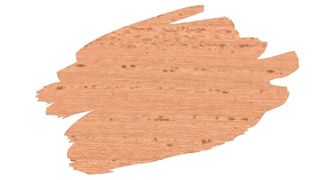When it comes to finding truly lightweight workable lumber, your choices can be counted on one hand.
The two lightest hardwoods in the world are Balsa wood (at number one), and Paulownia (which is close behind at number two). Yet, Balsa always seems to win out as the choice lumber for whittling, model airplanes, and even musical instruments.
But, why isn’t Paulownia more popular? Especially when you consider the fact that this timber can take stains and finishes much better than Balsa wood.
Well, in this post, you’re about to discover the top 5 reasons why you should consider ditching Balsa wood for Paulownia wood instead...

This post may contain affiliate links to products that we receive a commission for (at no additional cost to you). Learn more here.
Reason 1). Paulownia Is More Durable Than Balsa Wood
Paulownia is a hardwood that grows abundantly right across South-East Asia. And it is one of the most lightweight timbers on the market.
It has a soft texture to it too, making it as easy to whittle as Balsa wood.
However, while Balsa wood can wick up water and moisture like a sponge, Paulownia wood barely absorbs any water at all. And this minimal water absorption is key to Paulownia’s natural durability, since it doesn’t succumb to wood rot.
Related Post: Rotting Wood Around Your Sink? 3 Ways To Protect That Wooden Worktop | The Woodwork Place
Reason 2). Paulownia Is Much More Water-Resistant Than Balsa Wood
Paulownia’s water-resistance has given it the reputation of being waterproof, but this is not the case.
Sure, this wood is naturally rot-resistant, and barely soaks up any water. However, it is not water tight.
But, Isn’t Paulownia Wood Supposed To Be Waterproof?
No, for it to be waterproof that would mean that not a single drop of liquid can penetrate the lumber of this tree.
Instead, Paulownia wood simply soaks up very little water. So little, in fact, that it doesn’t suffer from wood rot (which occurs when wood is damp enough for fungi to grow).
And because this wood doesn’t turn to rotting mulch, bugs and insects can’t burrow into it either. So, it would be more accurate to say that this wood is very rot-resistant, rather than waterproof.
Reason 3). Paulownia Is More Stable Than Balsa Wood
There are very few hardwoods out there that are as stable as Paulownia wood. That is because stable wood doesn’t shift around with changes in humidity and/or temperature.
You see, wood is a hygroscopic material. Which is another way of saying that wood can soak up water, moisture, and even vapour, from the environment around it.
As wood soaks up water, it expands. And as it dries out afterward, it shrinks. And all of that shifting around can really throw off the balance and dimensions of a structure.
Now, stable woods barely expand and contract, no matter how much water they soak up. And as a stable lumber, Paulownia is more warp-resistant than Balsa wood.
Reason 4). Paulownia Takes Stains Better Than Balsa Wood
Balsa wood is famous for being very tricky to stain. It’s filled with voids underneath the surface. And those voids mean that stains dry unevenly on Balsa.
Any water-based finish gets sopped up by Balsa wood too quickly as well. Which is why you need to apply a wood conditioner or sanding sealer if you want to stain (or paint) Balsa wood.
Related Post: Can You Stain Balsa Wood? (Best Practice Revealed!) | The Woodwork Place
So, Can Paulownia Wood Be Stained?
When it comes to Paulownia, this fine-grained wood takes stains surprisingly well. Especially when you consider Paulownia’s honeycombed wood grain.
Reason 5). Paulownia Is More Buoyant Than Balsa Wood
Paulownia is popularly used to make kayaks and surfboards. This wood may not be quite as light as Balsa, but it floats much better than its featherweight counterpart all the same.
Is That Because Paulownia Wood Is Lightweight?
Yes, in fact it is listed as one of the top three lightest woods…a list which includes Balsa and Cuipo (which is another soft hardwood that can also be a great alternative to using Balsa).
When you compare their average dried weights, Paulownia weighs in at 18 lbs/ft3. Making it twice as heavy as Balsa wood, which weighs a mere 9 lbs/ft3.
Regardless, between its buoyancy, durability, water-resistance, and ability to take a penetrating finish well, Paulownia is a great alternative to Balsa wood.
To Sum Up, Here Are The 3 Key Takeaways From This Post…
- 1). Paulownia wood is much less water absorbent than Balsa.
- 2). Paulownia is a rot-resistant and insect-resistant wood.
- 3). Paulownia can take stains and finishes well.
References:
Soden, P. D., and R. D. McLeish. “Variables affecting the strength of balsa wood.” The Journal of Strain Analysis for Engineering Design 11.4 (1976): 225-234.
Ab Latib, H., Choon Liat, L., Ratnasingam, J., Law, E. L., Abdul Azim, A. A., Mariapan, M., and Natkuncaran, J. (2020). “Suitability of paulownia wood from Malaysia for furniture application,” BioRes. 15(3), 4727-4737.
